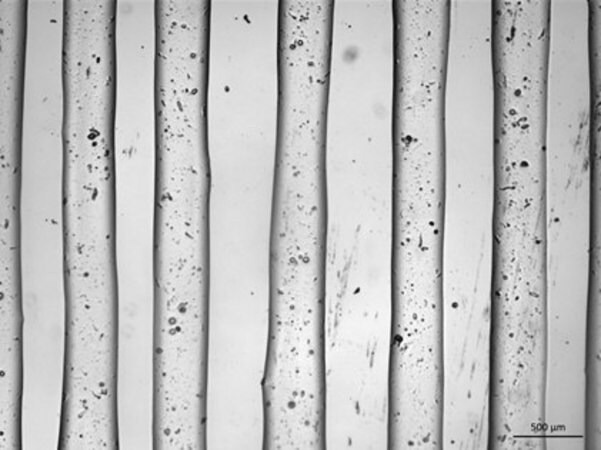Gelatin methacryloyl (GelMA) is a polymerizable hydrogel material generated from natural extracellular matrix (ECM) components. Gelatin has become a highly sought-after material for tissue engineering applications due to its low cost, availability, and preservation of natural cell binding motifs.
With the addition of photocrosslinkable methacrylamide functional groups to GelMA, it is possible to create biocompatible, biodegradable, and non-immunogenic hydrogels that are stable under biologically relevant circumstances and stimulate cell adhesion, spreading, and proliferation.
Adjusting the degree of functionalization and polymerization conditions allows for temporal and geographic control of the crosslinking reaction, creating hydrogels with unique patterns, 3D structures, and morphologies.

Image Credit: Merck
Properties
Source: Merck
| . |
. |
| Quality Level |
100 |
| Sterility |
0.2 μm filtered |
| Form |
Viscous liquid (to gel) |
| Size |
10 mL |
| Impurities |
≤5 CFU/g Bioburden (Fungal)
≤5 CFU/g Bioburden (Aerobic)
≤50 EU/mL Endotoxin |
| Color |
Pale yellow to colorless |
| pH |
6.5-7.5 |
| Viscosity |
2-20 cP |
| Application(s) |
3D bioprinting |
| Storage temp. |
2-8 °C |
Application
Bioinks based on gelatin methacrylate have been employed in the following bioprinting applications:
- Endothelial
- Cardiac valve
- Skin
- Tumors
- Osteogenic
- Chondrogenic
- Hepatic
- Adipogenic
- Vasculogenic
- Epithelial
Features and benefits
- Ready-to-use formulation designed for maximum printing fidelity and cell survival, removing the need for the time-consuming bioink formulation development procedure
- MilliporeSigma 3D Bioprinting Scientists designed and tested step-by-step techniques; no prior 3D bioprinting experience is required
- Appropriate for various extrusion-based 3D bioprinter models
- The methacrylamide functional group can also be employed to regulate the physical properties of the hydrogel, such as pore size, degradation rate, and swell ratio